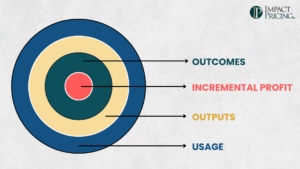Lately, I’ve had the need to and pleasure of thinking about using data for the purpose of segmentation. If you are statistically oriented, you know we’re probably going to use k-means cluster analysis. But that’s not the interesting question. The fun question is what variables to use when clustering?
The answer is it depends on the purpose of the segmentation. I can think of three key reasons to segment: Marketing, Product Development, and Pricing.
Before talking about variables, the definition of market segment that I think is most powerful is a group of companies or individuals with a common set of problems. (Thank you Pragmatic Institute.) I love this definition. This one variable, Problem, could and should drive the marketing message you use and the products you choose to build. After all, people buy products to solve problems.
Now to the variables:
Market segmentation has traditionally been used for marketing purposes. There are two very important decisions to be made: what message will resonate and how to reach them?
The variables that indicate which message will resonate likely come from surveys that list problems buyers want to solve or results they hope to achieve. Imagine a survey question like “On a scale of 1 to 7, how much do you disagree (1) or agree (7) with the following statement: My lack of statistics expertise hinders my success.” This results in a variable of how much of a problem statistics is to the respondent.
How to reach them is often demographic information like age, gender, geographical location, or psychographic information like attitudes and aspirations. Other variables may be helpful to reach them as well. Some that come to mind are do they use iPhone or Android? Do they listen to podcasts? If so, which ones? Are they heavy facebook users? Think of what variables might help you find and reach potential buyers.
The result of your cluster analysis when using both problems and demographic/psychographic information will be segments of similar individuals in terms of what they care about and how to reach them. With that information you can create a powerful marketing message and get it in front of the right people.
The second key reason to segment is for product development. If you build a product to please everybody, you please nobody. If you build a product for one person, your market is too small. The idea is to build a product for a group of people with a common set of problems.
One way to do this is to use the survey technique described above. You can cluster on the problems only (without the demographic and psychographic variables) and see what comes up. Another technique is to get preference data for product features and cluster on them. Product features solve customer problems. Even if you can’t articulate all of the market’s problems, by clustering on feature preference you are inferring that people with similar problems will prefer similar features.
Two common ways to collect feature preference data today are conjoint analysis and MaxDiff. You will need to carefully massage the results you get from either of these techniques into data that fits well into the clustering algorithm, but the results can be fascinating. By clustering on features, you end up finding which features go together for the largest number of respondents. You can often easily infer the mindset of the cluster based on the features they like or dislike.
The last key purpose of creating segments is price segmentation, charging different prices to different customers based on their willingness to pay. Although you could put price into a cluster analysis along with any of the variables already mentioned, that implies buyers within a segment have a similar willingness to pay. I much prefer segmenting without price first. Then, analyze the people within a segment to see which ones have a higher willingness to pay. This can be done using regression analysis with price as the dependent variable or simply using cross tabs (pivot tables). The last step is figuring out ways to charge more to those people with the higher willingness to pay.
Good job making it to the end of this somewhat technical post. I write these blogs to share thoughts I find interesting. This one has been top of mind lately, and is fascinating. I hope you agree. Please let me know your thoughts.















